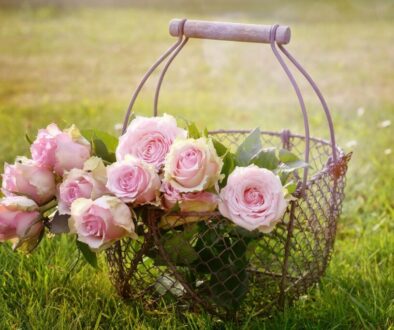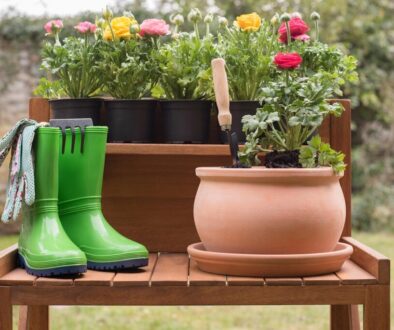January Garden To-Do List: Kickstart Your Gardening Year With These Essential Chores
The new year has arrived, and while winter still has its icy grip on the garden, January is the perfect time to prepare for the growing season ahead. Whether you’re dreaming of lush flower beds, thriving vegetable patches, or simply want to get your garden tools in shape, this month offers plenty of opportunities to stay productive. So, grab a warm drink, put on your gardening gloves, and let’s dive into your January garden to-do list!
1. Tidy Up and Organize Your Garden Space
Winter may have left your garden looking a little messy, but now is the time to clean up and get organized. Start by clearing away fallen leaves, dead plant matter, and any debris left over from the previous season. If your compost bin is looking full, turn it over to speed up decomposition and make room for fresh materials.
Check your raised beds and garden borders for signs of wear and tear. If any wooden structures are rotting or breaking down, plan for repairs before spring planting begins. It’s also a great time to inspect fences, trellises, and plant supports—fixing them now will save you time and hassle when climbing plants begin to flourish.
Don’t forget to sweep patios, paths, and driveways. Moss and algae can make surfaces slippery in damp conditions, so a quick clean-up can make your garden safer and more inviting.

2. Clean and Repair Your Gardening Tools
A gardener is only as good as their tools, so take a little time this month to ensure yours are in top shape. Pruners, shears, trowels, and spades should be cleaned to remove dirt and plant residue. Use warm soapy water and a stiff brush to scrub them down, then dry thoroughly to prevent rust.
Sharpening blades is another crucial step—dull tools make gardening harder and can damage plants with rough cuts. Use a sharpening stone or file to restore the edges of pruners, hoes, and shovels. If any tools have loose handles or broken parts, repair or replace them now to avoid frustration when you need them most.
For power tools like lawnmowers and hedge trimmers, check oil levels, clean air filters, and sharpen blades. Store everything properly, keeping tools dry and rust-free until they’re needed in the garden again.

3. Buy and Organize Seeds for the Upcoming Season
January is an excellent time to take inventory of your seed collection and start planning for the year ahead. Gather your packets from last season, check expiration dates, and make a list of what you need to restock.
Order seeds early to secure the best varieties before they sell out. Consider trying new vegetables, flowers, or herbs that you haven’t grown before—it’s a great way to keep gardening exciting and fresh! If you’re growing heirloom varieties, label and store them properly for future use.
For those eager to get a head start, some seeds can be started indoors now. Hardy vegetables like onions, leeks, and early tomatoes can be sown in seed trays and placed on a sunny windowsill or under grow lights.
4. Start Sprouting and Forcing Early Crops
Want to enjoy fresh greens before spring arrives? Sprouting and forcing certain crops indoors is a great way to add fresh flavors to winter meals. Microgreens, cress, and pea shoots can be grown easily on a kitchen counter, providing nutritious additions to salads and sandwiches.
If you love early potatoes, consider chitting them now. Place seed potatoes in a cool, bright location and let them sprout for a few weeks before planting. Similarly, rhubarb can be forced by covering a clump with a large pot or forcing jar, encouraging tender, sweet stems to emerge earlier than usual.

5. Plan Your Garden Design and Layout
Even though it’s cold outside, January is the perfect time to dream big about your garden’s future. Take out your notebook or use an online planning tool to map out what you want to grow and where. Consider crop rotation for your vegetable patch to maintain soil health and reduce pests.
If you’re planning new flower beds, think about color schemes, plant heights, and bloom times to ensure year-round interest. Make a wishlist of plants you’d love to add, whether it’s fragrant roses, towering sunflowers, or pollinator-friendly wildflowers.
This is also a good time to assess your garden’s hardscaping. Do you need a new patio, pathway, or raised beds? Planning now means you’ll be ready to start projects once the weather warms up.

6. Preorder Summer Flowering Bulbs, Dahlias, and Bare-Root Roses
If you want a spectacular floral display come summer, January is the time to place your orders for bulbs, tubers, and bare-root plants. Dahlias, lilies, gladiolus, and begonias will be in high demand, so ordering early ensures you get the best selection.
Bare-root roses are also available now and are often cheaper than potted varieties. These can be planted as soon as the ground is workable, giving them plenty of time to establish strong roots before blooming in summer.
Store any ordered bulbs and tubers in a cool, dark place until planting time arrives. If you have existing dahlia tubers from last year, check them for signs of rot or mold and discard any that look unhealthy.
7. Feed Birds and Support Wildlife
Winter can be tough on garden wildlife, so consider giving nature a helping hand. Keep bird feeders well-stocked with seeds, suet, and mealworms to support hungry birds. A fresh water source is equally important, so check birdbaths daily to ensure they’re not frozen over.
If you have hedgehog houses, bee hotels, or log piles, leave them undisturbed to provide shelter for overwintering creatures. Consider planting early-flowering bulbs like crocuses and snowdrops to provide nectar for bees emerging on mild winter days.

8. Take Notes and Reflect on Last Year’s Garden
A successful garden starts with good planning, and what better way to improve than by reflecting on the past year? Look back at what worked well and what could be improved. Were there plants that thrived or struggled? Did you face any pest or disease problems?
Take notes on any changes you’d like to make for the new season. Maybe you want to grow more herbs, try vertical gardening, or experiment with companion planting. Having a clear plan will make the upcoming growing season even more rewarding.
9. Explore New Gardening Techniques
This is a great time to research and experiment with new gardening methods. Look into permaculture, no-dig gardening, or hydroponics. Trying a new approach could lead to more efficient and sustainable gardening practices in the future.

Final Thoughts
January might not be the busiest time for planting, but there’s still plenty to do in the garden. From organizing seeds to repairing tools and planning new projects, every task you complete now will set you up for a successful year ahead. So, embrace the quiet beauty of winter, dream about the lush garden to come, and enjoy the process of preparation.
Happy Gardening!




